Puffins and shearwaters, skuas and terns, gannets and gulls and guillemots and wings, these are a few of our favourite things (seabirds)
From a heroic long-distance swimmer to a producer of spectacularly eerie sound effects, the seabirds seen swooping and diving over British waters have all manner of singular skills.
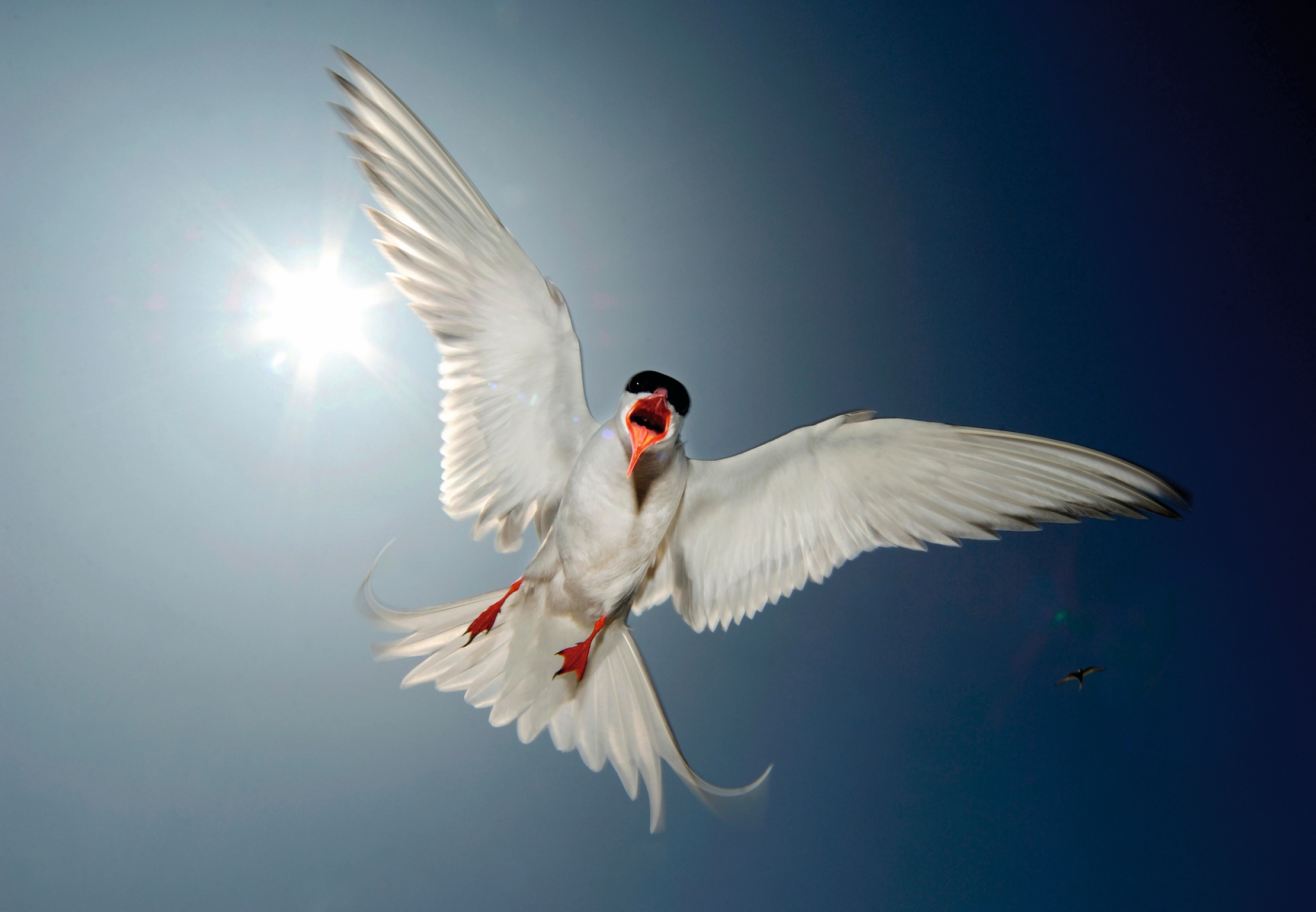

A precious stone set in a silver sea. The British have long considered their isles a sort of Eden and seabirds would certainly concur: with 19,491 miles of coastline and fish-rich seas to plunder, our avian neighbours unsurprisingly find the place an absolute des res.
For statistical starters, 80% of the world’s Manx shearwater breed here, 60% of great skua and 34% of European shag. It’s not only the quantity of our coastline that draws them in, it’s the quality: the wave-girded inaccessible islets and the towering sea cliffs with ledges that provide near impregnable nesting refuges for seabirds. Skomer was once the haunt of men — Vikings — now, it is the home of Manx shearwaters and puffins.
That question, of course, is: what is a seabird? Peregrines and choughs live on cliffs, but they are not seabirds. A true example is an avian that relies on the ocean to survive and whose body has evolved for the marine world, often developing what amounts to superpowers in the process.
'In 1935, a puffin toddled down the Strand in London and stopped the traffic'
The sheer number of them here is fantastic: Britain and Ireland host more than eight million from 25 species. Many prefer living in colonies and, sometimes, tens of thousands of birds will cram together on dizzying cliffs and remote rock stacks, which become guano-painted white in the summer breeding season. Drama and dramatic scenery are combined: such is the cacophony of these ‘cities’ that they may be heard before they are seen.
The largest seabird cities are concentrated in the north and west, especially on such islands as St Kilda and Handa off Scotland and Skomer and Skokholm off Wales. Flam-borough Head, East Yorkshire, is the largest mainland colony of seabirds and East Anglia and the Solent hold large tern colonies. Yet there are seabirds on all coasts and at all times of year: in addition to the natural nesters, come the visitors fleeing the cold and ice of the far North. Many of our seabirds are great nautical voyagers and arrive trailing the mystery of their lives out there on the ocean. See one and you witness true wilderness.
Arctic tern — The Sun Worshipper
These beautiful, swallow-like seabirds are the sun-seekers of avia. Arctic terns nest in the far Northern Hemisphere in our summer, then turn around and fly to Antarctica for a second one. As well as partaking of more daylight than any other animal on the planet, they undertake the longest regular migration. An Arctic tern can clock up 56,000 air miles per annum; imagine the frequent-flyer rewards.
The bird is a nesting familiar at the top end of Britain, where it torments twitchers with its similarity to the common tern (the former has a longer forked tail). Usually, Arctic tern colonies are a maelstrom of sound on the sandy, shingly shoreline, but sometimes will fall instantly silent, a happenstance known as ‘dread’. During migratory periods, the ‘sea swallow’ can be spotted on all our coasts, even inland at reservoirs and lakes.
Exquisite houses, the beauty of Nature, and how to get the most from your life, straight to your inbox.
Northern gannet — The Dive-Bomber
Europe’s largest seabird, as indicated by etymology, gannet being derived from the same word-root as goose and gander. Its blade-like wings measure nearly two yards across. Happily, these are folded back for its spectacular vertical dives, during which it hits the sea like a white lightning bolt at 60mph in its pursuit of piscine sustenance.
How does the bird survive the headbanging? That’s the gannet’s top trump: to reduce impact injuries, air sacs in its head and neck inflate like car airbags. Moreover, to stop water entering the bird’s schnozzle, its nostrils are located inside the mouth, which it keeps closed on entry.
More than half the world’s population of gannets breed in the UK, mostly in Scotland. The Bass Rock in the Firth of Forth is home to the largest gannetry on the planet, with 75,000 breeding pairs. Other significant colonies can be found at Bempton Cliffs in East Yorkshire and Grassholm in Wales.
Big Seabird merits an honourable mention for its impact on culture. ‘Eating like a gannet’ is gorblimey slang for a voracious appetite. Sublimely, the gannet is among the very first birds mentioned in national literature. In the Anglo-Saxon epic poem Beowulf, the sea is the ganotes baeth.
Puffin — The Champion Weightlifter
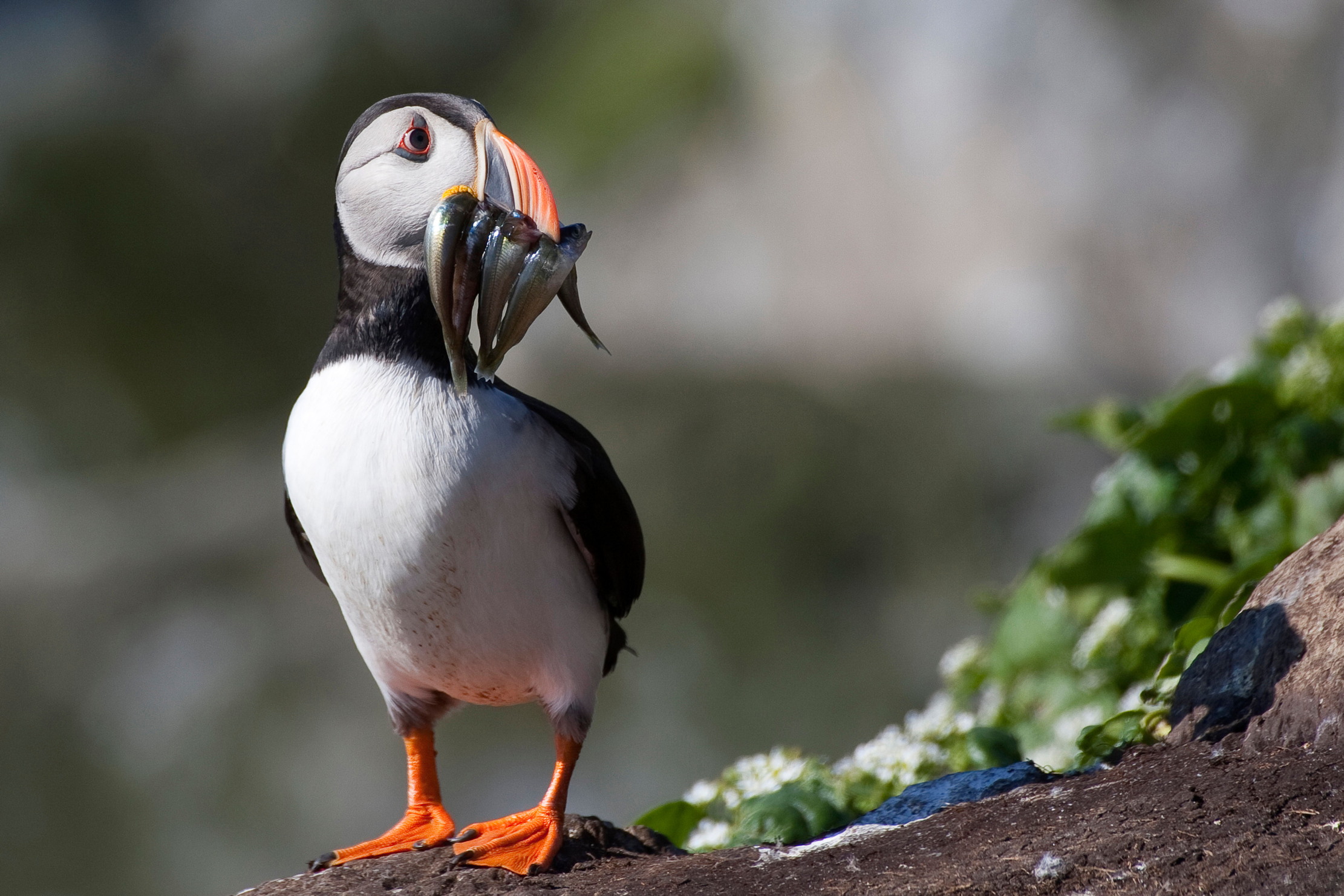
'Who's hungry?'
What do Willy, Tommy and Bill have in common? They are all affectionate local names for the puffin, an absolute shoo-in for the title of ‘Our Most Endearing Seabird’. Savvily, the diminutive auk was selected as the emblem for what became a rather successful imprint of children’s books. For identification purposes, the multi-coloured triangular bill is all that is needed, although one could add the appealing waddling when on land; in 1935, a puffin toddled down the Strand in London and stopped the traffic.
In flight, the wings clockwork-whirr at 400 times a minute. The puffin nests in headland burrows and rears a — wait for it — ‘puffling’. Quite demanding, that chick, requiring its own weight in fresh fishy stuff per day. Luckily, Mummy and Daddy Puffin’s superpower is the ability to hold several fish in their bills at one time. Indeed, one puffin is recorded as holding 126 sand eels in its beak, helped by the bird’s rough tongue. One obvious place to see them is Lundy Island, north Devon (lunde is Norse for puffin).
'This on the ridges of a towering cliff, where falling out with the neighbours would entail actually falling off'
Common guillemot — The Space-Saver
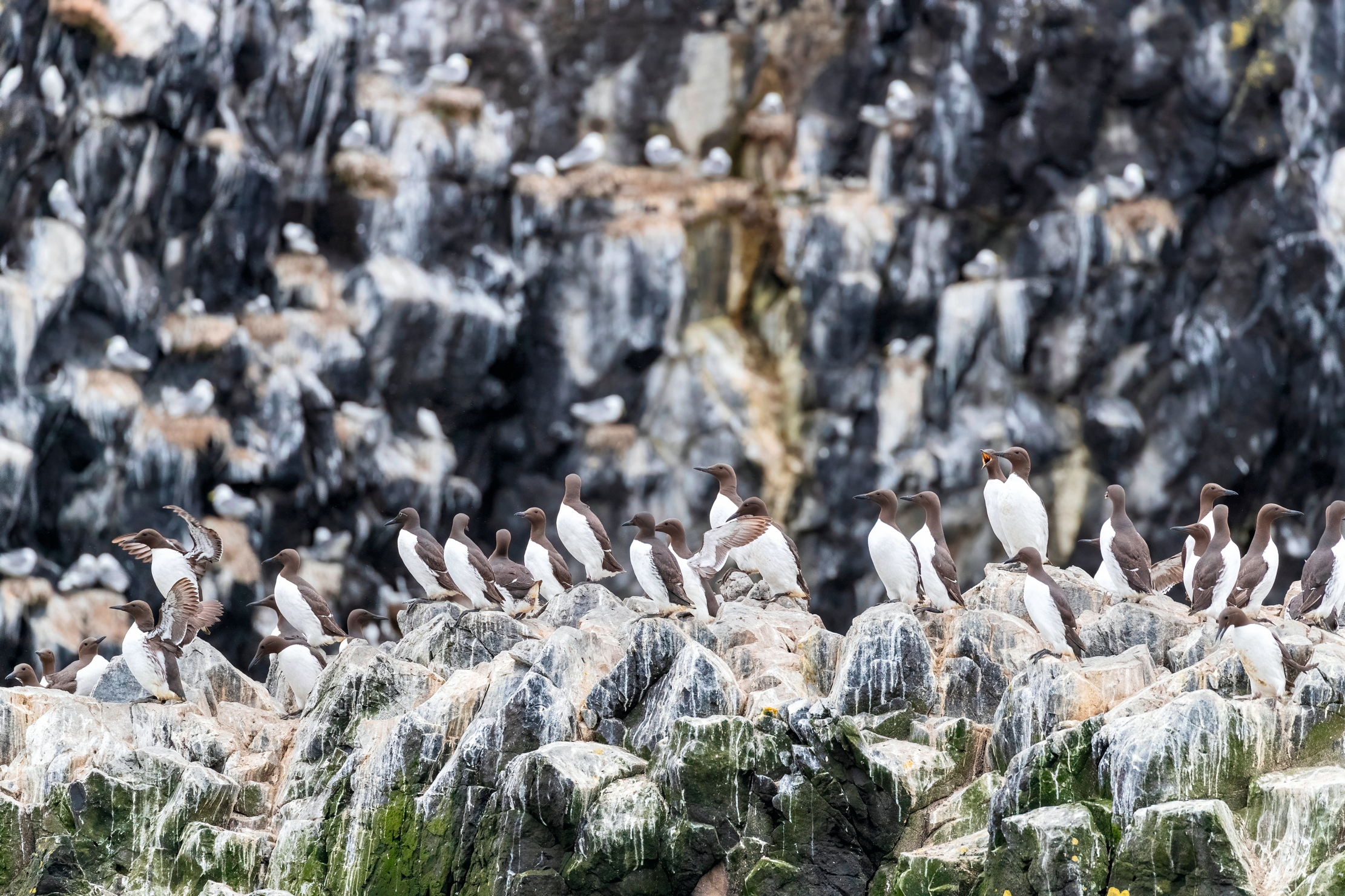
Get off my very tiny, but well guarded, piece of rock.
The penguinish guillemot likes life on the ledge. For multiple occupancy of limited housing space, the bird has no seabird peers: as many as 70-plus nests have been recorded per square yard. This on the ridges of a towering cliff, where falling out with the neighbours would entail actually falling off.
A member of the auk family, the guillemot also wins the ‘Good Egg’ prize: pear-shaped, its single egg stays in place and does not roll over the edge to oblivion. Such are the beautiful, individual markings on those eggs, suggestive of echograph messages from another realm, that they were collected obsessively by oologists in the past. There are perhaps a million pairs of guillemots spread around our coast, with the guillemot ‘city’ at Flamborough and Filey Coast in Yorkshire boasting 57,000 breeding pairs, all of which seem to bellow ‘aaarrrrr’. Take ear protectors.
European herring gull — The Criminal Mastermind
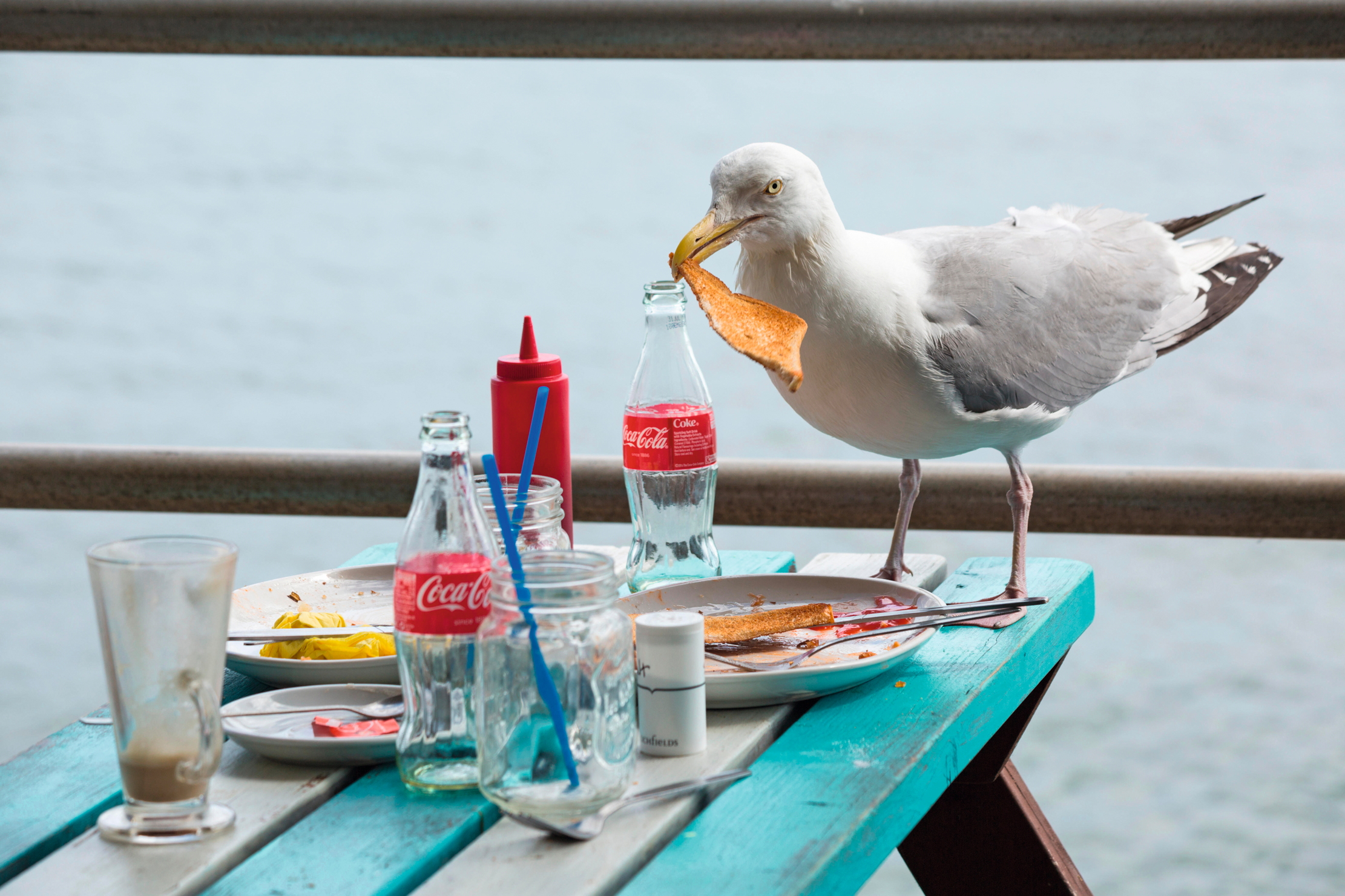
'Are you gonna finish that....'
If herring gulls could write, they would presumably erect a notice outside their colony announcing ‘Not Gone Fishing’. Despite the moniker, this seabird has no preference for herring and is infamous for nicking the snacks of strollers beside the seaside. Day-trippers understandably take umbrage. When an unsuspecting Mrs Dack on Brighton seafront in East Sussex was relieved of her doughnut by a passing gull, her husband commented in the Daily Mail: ‘If there’s one thing Mrs Dack doesn’t like it’s having her doughnuts pinched.’
Exactly. Crisps, ice cream… it’s all fair game to herring gulls. Here’s the rub: according to researchers at the University of Sussex, Larus argentatus is conspicuously brainy and even mimics the food choice of humans. You choose a Greggs sausage roll and the gull copies you. A better class of gull, therefore, is to be found hanging around Rick Stein’s Fish & Chips in Padstow, Cornwall.
The cry of the herring gull — the seagull — is the soundtrack of the seaside, but the once-common herring gull is, mournfully, a declining species, down by 50% in 25 years.
Brünnich’s guillemot — The Deep-Sea Explorer
Is it a submarine? Is it a bathyscaphe? No, it’s Brünnich’s guillemot. The bird would take the Guinness World Record for being the deepest diving seabird by a nautical mile. This larger relative of the common guillemot plumbs the depths to 690ft and makes its descent at a Ferrari-comparable 6ft 6in per second. For such bottoming, it gets top trumps. Certainly, Uria lomvia, an uncommon Arctic visitor to the UK, is rarely seen. Perhaps because it’s swimming along the seabed?
Fulmar — The Self-Defence Expert
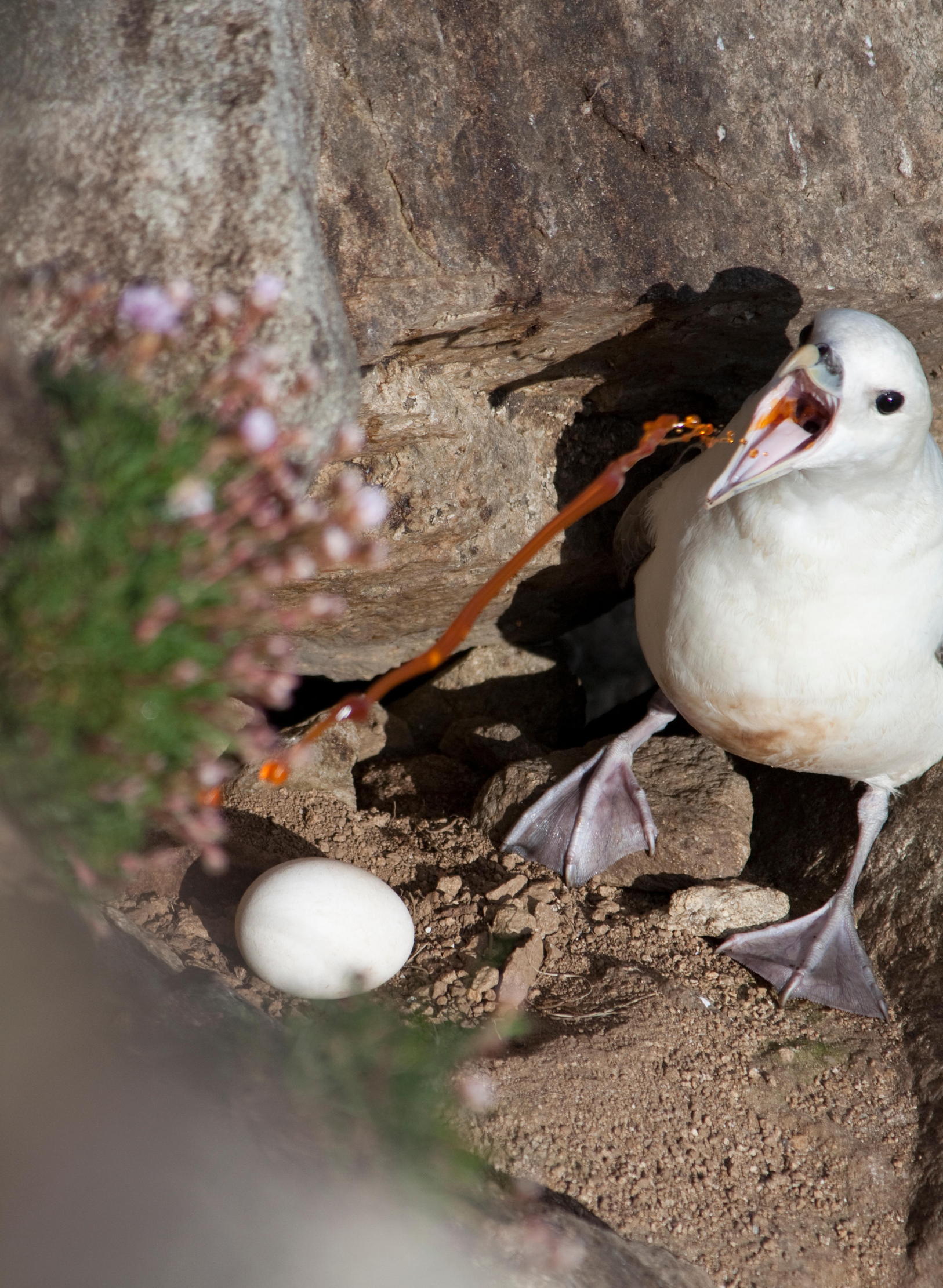
If you disturb a nesting fulmar, prepare to be vomited at.
This dove-like seabird may look all sweet innocence, but it has a dastardly trick up its beak. If provoked, it ejects a stinking stream of oily gastric secretions at its attacker, forcibly — and accurately — to a yard or more. Hence fulmar, originating from the Old Norse full meaning ‘foul’ and mar meaning ‘gull’. This ‘tubenose’ (see those sawn-off double-barrels above the beak) truly noses ahead of the flock in another respect: fulmars, dedicated seafarers, can desalinate their bodies via a gland in their hooter.
Fulmarus glacialis gets a special mention, too, for being a seabird on a rising population tide. Until the mid 18th century, the species, closely related to the albatross, was restricted in its British breeding to St Kilda; now, it nests all around the Isles.
'It can recognise the scent of its own burrow nest in the dark. Once home, it purrs like a cat'
Storm petrel — The Long-Distance Swimmer
Our smallest breeding seabird, barely larger than a house martin, the storm petrel rides out the Atlantic weather stealing hearts for its heroism. A veritable seafarer, it was frequently encountered mid ocean by sailors of yore, who accorded it superstitions galore. The bird’s habit of trailing its legs over the surface of the sea seemed to be reminiscent of St Peter attempting to walk on the Sea of Galilee and its alternate name of Mother Carey’s chicken is argot for the Latin Mater Cara, the Virgin Mary; the birds were considered divine warning of storms.
More profanely, the storm petrel is ‘aromatic’: it whiffs, and knows it. Among the few birds with a strong sense of smell, it can recognise the scent of its own burrow nest in the dark. Once home, it purrs like a cat. The west coast of Britain is a bastion for the species.
Great skua — The Highwayman
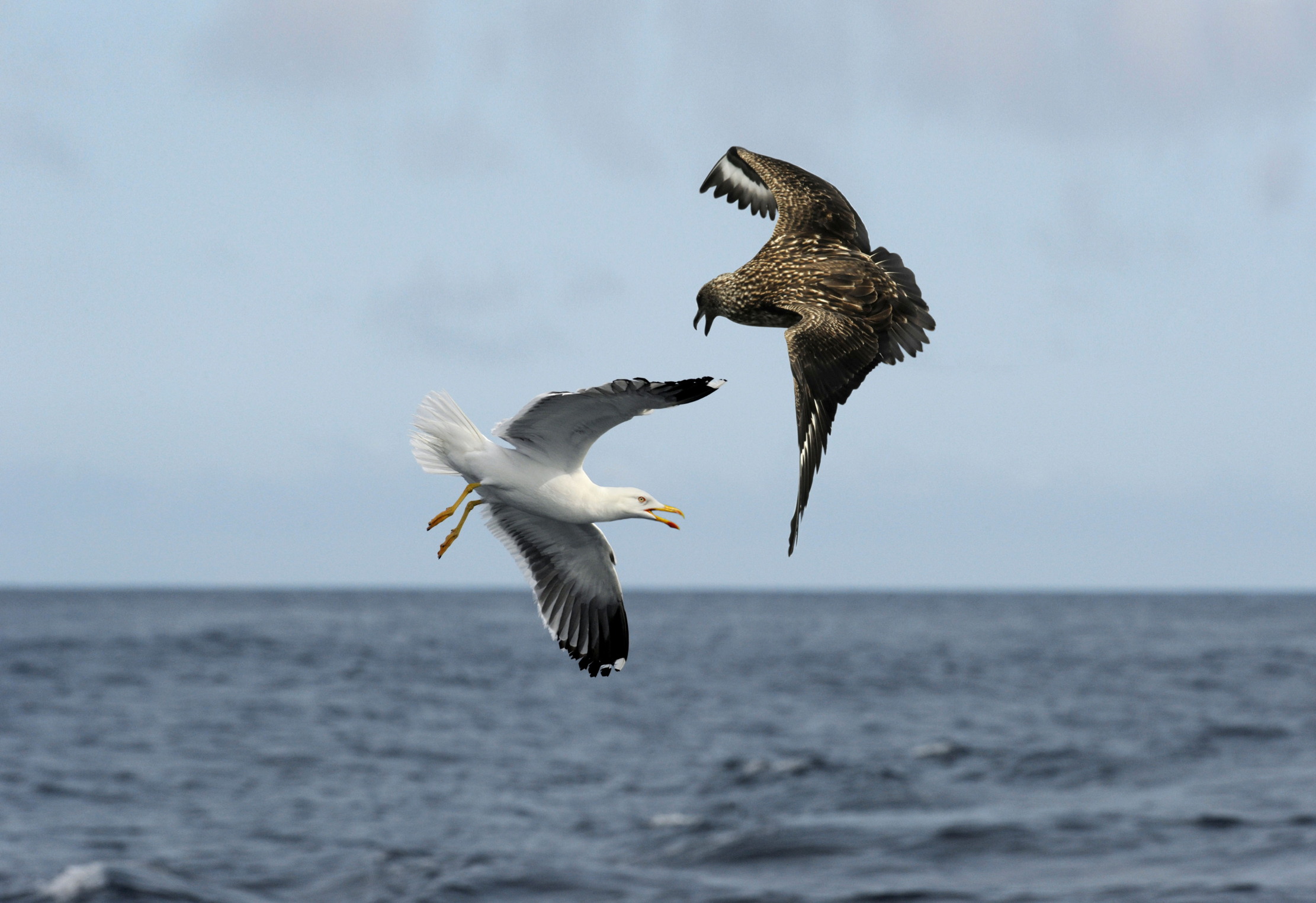
A great skua robbing a herring gull. Now they know how it feels.
Brown and brutish, the great skua is the pirate of the seas, harassing other birds and forcing them to regurgitate their catch for its advantage, so-called ‘kleptoparasitism’. Even the gannet is subject to the skua’s daylight seaway robbery, but the skua will sometimes deign to prey on smaller birds and mammals.
For all its bad-bird reputation, one cannot fault the moxie of the ‘bonxie’: although merely gull-sized itself, the bird will aggressively dive-bomb — Stuka-style — humans trampling near its nest. Great skuas breed in the northernmost isles, but outside summer their free-booting can be witnessed on all coasts.
Manx shearwater — The Sound-Effect Specialist
A pelagic wanderer, the Manx shearwater is eponymously famous for tilting or ‘shearing’ in flight above the waves. In the way of numerous long-distance seabirds, it can barely walk on terra firma and shuffles to its burrow nest at night to avoid predators. The bird’s eerie nocturnal cacophony of cries, cackles and coos from underground confused Vikings on the Scottish isle of Rum, who believed the place to be the abode of trolls. The calling is, in fact, a homing system: birds hear their mate’s booming and plonk themselves down at the correct burrow entrance.
Manx shearwaters can fly 400 miles on their daily food trips and are our longest-lived seabird, with one recorded individual notching up a half century — and, yes, its scientific tag really is the inappropriate Puffinus puffinus, 1/10 in seabird nomenclature.
-
 Suit yourself: I’m a 49 year-old man-about-town and I’ve never owned a suit
Suit yourself: I’m a 49 year-old man-about-town and I’ve never owned a suitWhen Hugh Smithson-Wright turned up to Country Life's annual Gentleman's Life party sans suit, it sparked a passionate conversation about why the formal fashion just isn't for everyone.
-
 'The ugliness and craziness is a part of its charm': The Country Life guide to Bangkok
'The ugliness and craziness is a part of its charm': The Country Life guide to BangkokWhere to stay, where to eat and what to do in the Thai capital.
-
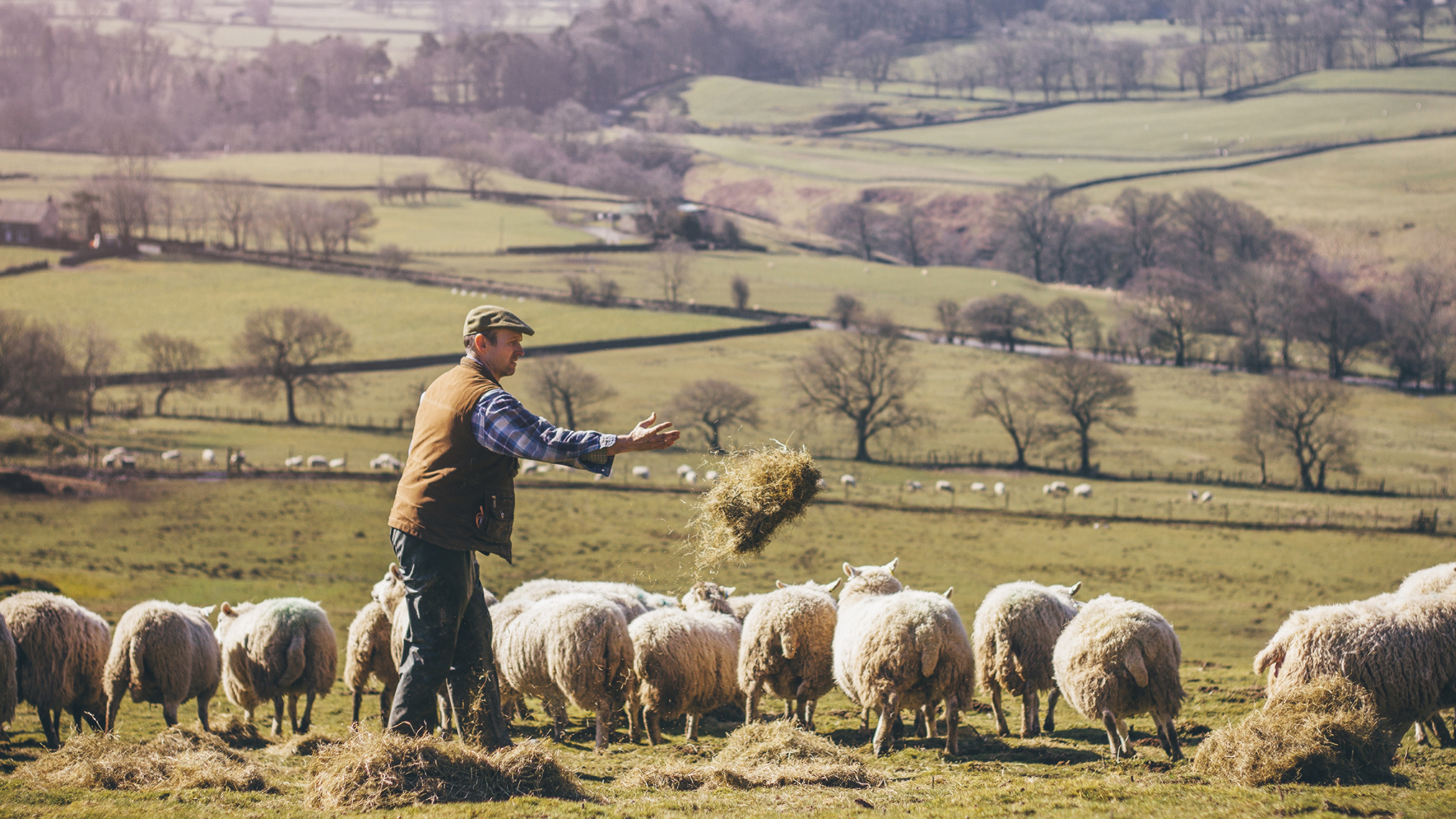 I was Jeremy Hunt’s main political adviser and helped put together multiple Autumn Statements and Budgets. This is what I think Rachel Reeves’s Budget means for the countryside
I was Jeremy Hunt’s main political adviser and helped put together multiple Autumn Statements and Budgets. This is what I think Rachel Reeves’s Budget means for the countrysideAdam Smith, former chief of staff to the Chancellor of the Exchequer, reflects on what last week's Budget means for the countryside and how we ensure the rural voice is heard loudly inside Budget preparations.
-
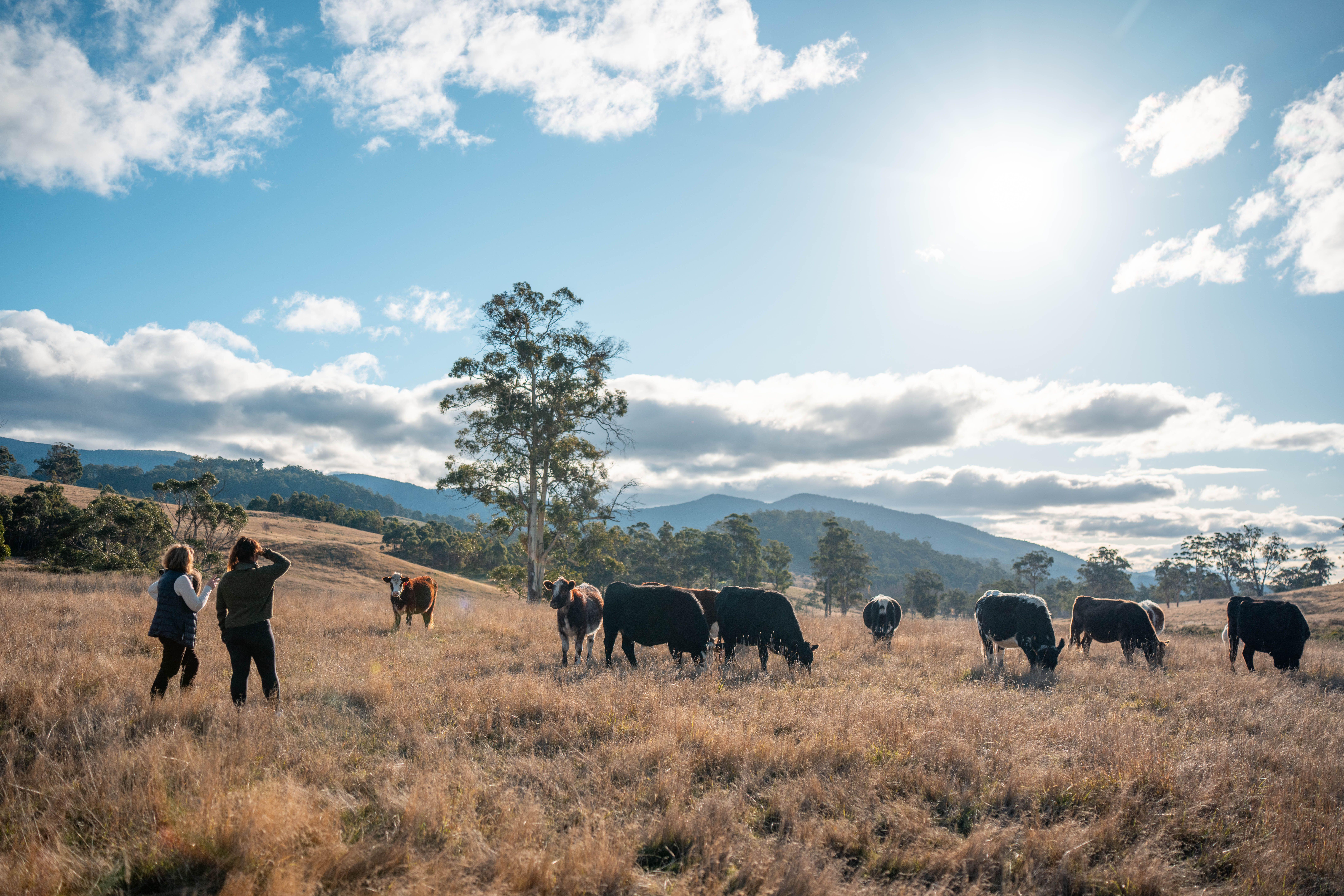 The Budget: What do we need to fix a broken countryside, and what will we get?
The Budget: What do we need to fix a broken countryside, and what will we get?With the Autumn Budget looming, countryside and heritage organisations reveal what they are hoping to hear to fix the turmoil — and what they are dreading
-
 'I’m going to be the first in more than 100 years to sell anything off': How the upcoming budget uncertainty is impacting young farmers
'I’m going to be the first in more than 100 years to sell anything off': How the upcoming budget uncertainty is impacting young farmersChanges to inheritance tax, property relief and Defra budgets will likely change Britian's rural landscape. We ask the next generation of farmers what they think their future will look like.
-
 An unfenced existence: Philip Larkin's love of the countryside
An unfenced existence: Philip Larkin's love of the countrysideRichard Barnett pokes at Larkin’s protective carapace of soot-stained gloom and finds a writer with an unillusioned yet tenderly perceptive sense of Nature, in all its beauty and indifference
-
 Baby, it’s cold outside (even if you have a natural fur coat): How our animals brave the winter chill
Baby, it’s cold outside (even if you have a natural fur coat): How our animals brave the winter chillWhen the temperature drops, how do Britain’s birds, beasts and plants keep the cold at bay? John Lewis-Stempel reveals Nature’s own thermals.
-
 Retro rubbish: Waste from the 90s unearthed in 97-mile-long beach clean
Retro rubbish: Waste from the 90s unearthed in 97-mile-long beach cleanThe 6,482 volunteers unearthed waste discarded decades ago among the 232,229 pieces of litter recorded during the initiative.
-
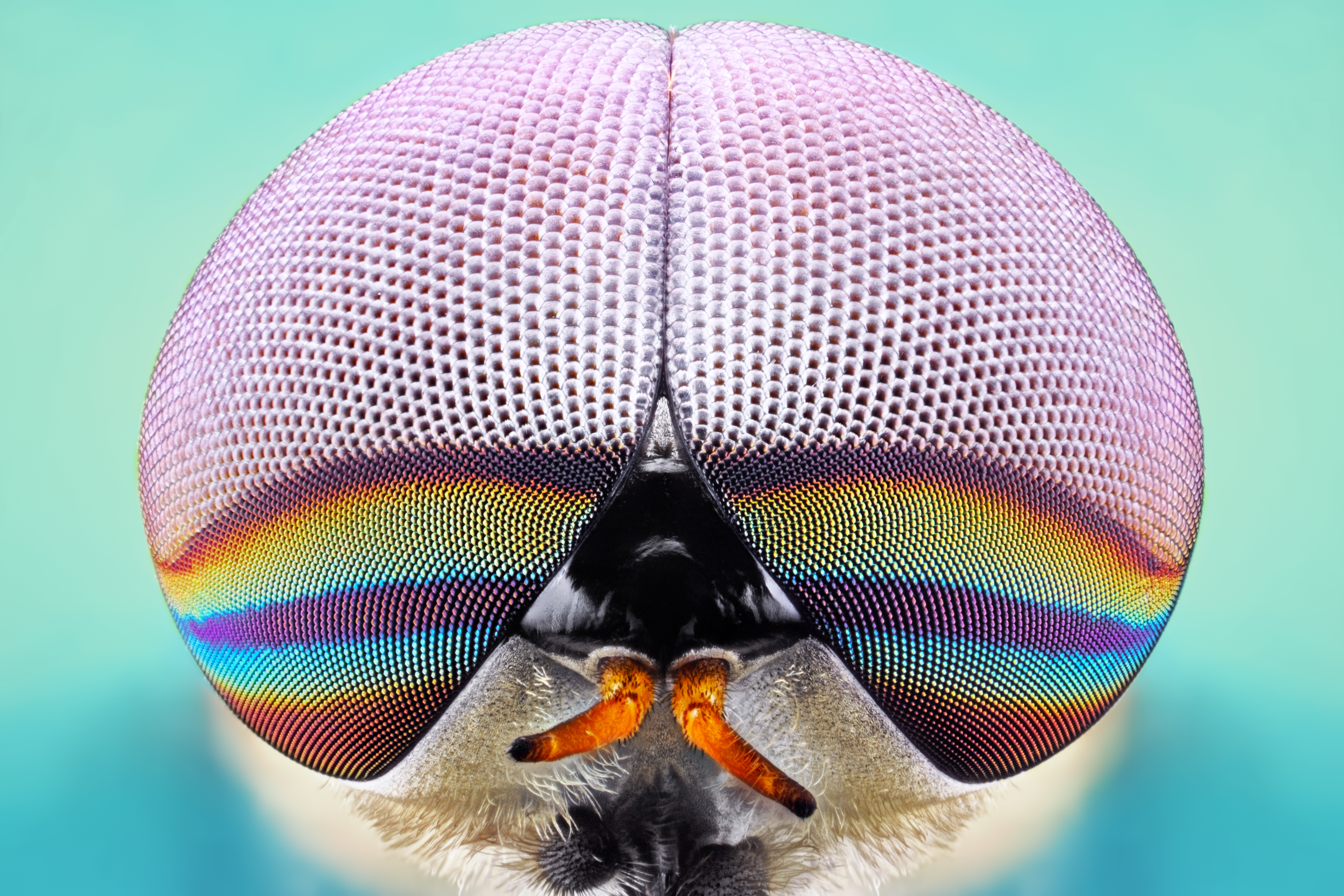 Dangerous beasts (and where to find them): Britain's animals that are best left alone
Dangerous beasts (and where to find them): Britain's animals that are best left aloneJohn Lewis-Stempel provides a miscellany of our otherwise benign land’s more fearsome critters.
-
 Mystery, muse and metaphor: There's more to fog than meets the eye
Mystery, muse and metaphor: There's more to fog than meets the eyeSmothering, transformative and beautiful, fog’s close-set shroud has inspired titans of literature, cinema and art — and forces the rest of us to look at the world a little closer.
